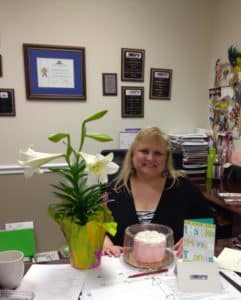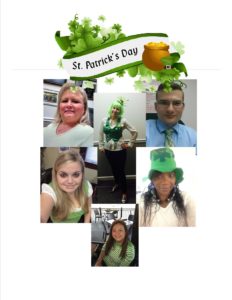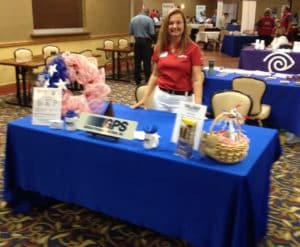 Millennials were the first generation to have smartphones available before adulthood. Text messaging is often their preferred form of communication, and social media was part of many millennials’ high school experience. (Photo/Blue Acorn)
Millennials were the first generation to have smartphones available before adulthood. Text messaging is often their preferred form of communication, and social media was part of many millennials’ high school experience. (Photo/Blue Acorn)
By Liz Segrist
lsegrist@scbiznews.com
Published March 24, 2016
From the March 21, 2016, print edition
Search online for “millennials in the workplace” and more than 500,000 results will surface on Google, including “how to train for and manage millennials,” “millennial characteristics” and “how to not irritate the hell out of millennials.”
Millennials are one of the fastest-growing generations in the workforce, and companies are looking for ways to recruit and retain them, according to Charleston-based recruiters and data from the Pew Research Center.
Millennials are defined by Pew as the generation born between 1981 and 1996, meaning adult millennials are now between 19 and 34 years old.
They were the first generation to have smartphones available before adulthood. Text messaging is often their preferred form of communication, and social media was part of many millennials’ high school experience.
Several human resources managers, CEOs and millennial-aged employees said millennials often seek flexible hours, the ability to leave for an appointment or gym class and a micromanagement-free environment.
They said millennials need to feel passionate about their work. They want to be challenged and valued for it. A strict environment can squelch a creative atmosphere, said Taylor Driesell, a millennial and talent acquisition specialist for Blue Acorn, a Charleston-based e-commerce tech firm.
Open floor space, pingpong tables and beer on tap help augment the office’s “cool factor,” but according to Jared Hellman, also a millennial and an optimization account manager at Blue Acorn, his generation desires a culture that truly supports work-life balance.
“I think at the highest level, what’s attractive to me is a place where I can be myself,” Hellman said. “I grew up watching both of my parents compartmentalize their lives so that they were one person at home and one person at the workplace. A lot of us are looking for a place where we don’t have to suppress our playful side at work. We want to be ourselves.”
Millennials in the workplace
When Peggy Frazier was recruiting employees to Apple, she worked a minimum of 60 hours a week, “and loved it.” Now, as vice president of global talent acquisition for Blackbaud, a Daniel Island-based tech firm focused on nonprofits, Frazier said she recruits millennials who want more balance between work and their life outside of it.
“My kids are millennials, and they grew up watching me work crazy hours, and they didn’t want to do that. … It’s a different view of what’s important,” Frazier said.
As the generation continues to become a larger part of the workforce, millennials are sometimes characterized as lazy or entitled. They also are seen as creative and efficient workers, as well as tech-savvy without training, said human resources professionals.
Keyana Cordano works with mostly millennial-aged students as the employee relations and career development director for the College of Charleston’s MBA program.
Cordano said the students often need to hone their verbal and written communication skills when applying for jobs, because “so many of them are used to texting and doing shorthand for everything.” Some of the millennials also need a push to take the initiative to pursue opportunities.
In her experience, nearly all job-seeking millennials want a mission-driven organization that aligns with their values, as well as the option for work-life balance and international travel.
“I don’t think these traits are a stereotype; I think it’s often their personalities. I can’t say it’s everybody, but I work with a very large group of millennials, and they all have similar traits and desires,” Cordano said.
Recruitment
Margaret Pilarski of the Charleston-based marketing firm SeaChange Consulting — and also a millennial — said good benefits, including a 401(k) and health insurance, and an interesting job description are important to her when she is looking for a job.
As the former senior editor of two Skirt publications, Pilarski was laid off when the magazine’s editorial department shut down. During her job search, she said she found mostly impersonal job descriptions that failed to explain the position or company culture well.
“I like a good fit for the place where I’m going to spend most of my waking hours, but so many job listings were dry and, frankly, sad. … I know I do my best work when I’m challenged and believe in what I get to do,” Pilarski said. “Those things aren’t usually apparent at first glance in a job post. … With fewer opportunities to ‘climb a career ladder’ at a place, I think we find value in day-to-day satisfaction rather than over years.”
Pilarski said she wants to see companies offer flexible scheduling. She said her generation is willing to work long hours, but not in a nine-to-five, desk-only environment when technology enables working remotely and after regular business hours.
“The 40 hours a week is just so old-fashioned now,” Pilarski said. “We are truly optimizing the rest of our lives. If I have something in the afternoon, like a doctor’s appointment, I do not want to have guilt for not being present at my desk at the moment.”
Cristy Jamison, a 27-year-old account manager with Touchpoint Communications, said a creative, collaborative office culture that fosters growth were crucial when she was job hunting.
“If leaders give them the ability to grow within the company — through title changes or perks, professional development opportunities, going to conferences or being part of different organizations in the community — that would help keep millennials longer,” Jamison said.
Retention
Tommye Priest, Blue Acorn’s human resources director, said the 130-employee tech firm has a mostly millennial workforce. She said having employees take anonymous surveys about the company and then implementing changes from the responses has been a good way for millennials to have their opinions heard.
“Our generation basically did what we were told,” Priest said of the baby boomers. “Millennials are very vocal; they know what they want and they are willing to fight for it. You have to be open to that.”
Priest said Blue Acorn has created training and mentorship programs to help millennials see a future for themselves within the company. She said learning different ways to reward millennials based on personalities helps instill a feeling of value.
“Turnover is painful. The question companies have to ask is: Do you want valuable employees to stay? These employees bring so much energy, and we need to help them want to stay here,” Priest said.
Five years ago, Virgil Virga said he did not understand the need to get buy-in from his employees on a project — he felt it was their job to do so. Virga, COO of Metronome, a Fairfax, Va.-based IT provider for the federal government with operations in Charleston, said he struggled to retain millennial-aged workers.
Virga said he has since realized millennials typically need to see the passion and reasoning behind why something needs to be done. They have a strong sense “to get their hands on a lot of projects” and “wear a lot of hats.”
“Millennials are not going to tolerate an iron fist. They will be gone, out the door. This forced me to become a much more thoughtful, caring leader. I’m the first one to show emotion, which gives everyone the freedom to do that,” Virga said. “We’re investing in this because nobody wants to lose good, institutional knowledge. It’s all about retention. You want to keep what you have.”
So Virga started baking that concept into his company’s culture. He hired a consultant and implemented a leadership program to help millennials scale and learn new skills. It also was meant to help them work better with employees from different generations, who often have different perspectives and experiences to pull from.
“In my last company years ago, it was like pulling teeth to have people wanting to do things,” Virga said. “Now we have people jumping in who understand the purpose behind why we want to do something, and people are excited for it. To me, that’s invaluable to know that people want to be involved.”
Frazier of Blackbaud said companies should focus on ensuring employees from different generations can work together, but she added that it is also important to understand what’s important to each generation to effectively recruit them.
Millennials often seek a coaching style of leadership from their managers, which spurred Blackbaud to eliminate annual performance reviews.
To keep millennials longer than the average of two to three years — her goal is at least seven years — Frazier said they need the company to invest in them, need to have opportunities to lead and grow within their roles and need to feel they have a voice within the company.
Millennials want a job that helps them make a difference, and one that has “a meaning bigger than themselves,” said Frazier, also the council co-chair for the Charleston Open Source talent attraction campaign.
“It’s all about understanding how to leverage all these different strengths, based on experiences and backgrounds, to create something special,” Frazier said. “The companies that are going to be successful in recruiting are the ones that figure this out.”
Reach staff writer Liz Segrist at 843-849-3119 or @lizsegrist on Twitter.


 Millennials were the first generation to have smartphones available before adulthood. Text messaging is often their preferred form of communication, and social media was part of many millennials’ high school experience. (Photo/Blue Acorn)
Millennials were the first generation to have smartphones available before adulthood. Text messaging is often their preferred form of communication, and social media was part of many millennials’ high school experience. (Photo/Blue Acorn)

